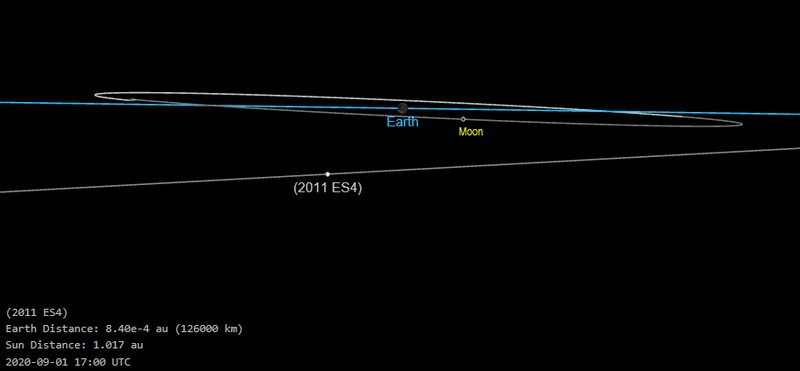In a few weeks, an asteroid about 50 meters in diameter will rub shoulders with Earth less than 75,000 kilometers away. Rest assured, the object poses no threat. Nevertheless, it remains large and close enough to be considered "potentially dangerous" by NASA.
Things are happening above our heads! For the past few days, astronomy enthusiasts and simply curious people have been able to take advantage of the remarkable passage of comet NEOWISE, visible to the naked eye from sunset between the legs of the Big Bear. An opportunity to be seized since the comet will only return to the vicinity of the Sun in 6,800 years .
In a few weeks, NASA will also focus its attention on a new visitor from space:asteroid 2011 ES4. Much less impressive than the comet, this object of about 50 meters in diameter will still pass at less than 72,000 kilometers from our planet on September 1.For comparison, this distance is only one-fifth of the average distance between the Earth and the Moon.
While this asteroid has almost no chance of hitting Earth, NASA still prefers to classify it as a "potentially dangerous" object. It will therefore be monitored. Researchers will also try to follow its passage in real time in order to learn even more about this type of object.
Note that five other asteroids will pass near Earth before the end of the month:BF25 2002 on July 21, ND 2020 on July 24, 2020 MX3 on July 29, as well as PY7 2018 and RF1 2007 on July 31. In August, four more of these objects will also come to visit us before the arrival of ES4 2011 on September 1st. All these NEOs will obviously remain at a safe distance .

In general, while the orbits taken by known asteroids are fairly well understood, it sometimes happens that certain objects take us by surprise. This was indeed the case last July, with the discovery of a rock 100 meters wide only a few hours before it "brushed" the Earth at about 70,000 km away .
This is why this type of threat is now taken very seriously. Recently, ESA and NASA even joined forces for the DART (Double Asteroid Redirection Test) mission, which aims to deflect the trajectory of an asteroid in 2022. The two agencies have already chosen their target:(65,803) Didymos , a binary asteroid discovered in 1996.
As of this year, researchers will also have the support of the Vera C. Rubin Observatory , which should be online soon. This instrument will allow the discovery of tens of thousands of new asteroids, some of which could pose a threat to our planet.